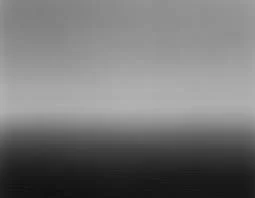Seascapes and Hiroshi Sugimoto
by Annie Collins
Hiroshi Sugimoto, Ligurian Sea (1993)
Hiroshi Sugimoto’s seascapes are unlike any others. His career as a photographer began in the mid-1970s, when he moved from Japan to the States. His work is heavily influenced by surrealism, as well as by Dadaism and the writings of Marcel Duchamp. Sugimoto simplifies and almost diminishes the seascape, often reducing it to just several blocks of colour. While these photographs may seem mundane, typically only consisting of two components - the sea and sky - they represent the key to life on Earth - water and air. The photographs evoke a sense of peacefulness and familiarity. When looking at the series as a whole, you realise how the ever-changing sea can be portrayed in countless different ways. Oceans and seas came of interest to Sugimoto because although they are constantly in motion, they are timeless and immortal.
Over the past few months, I have ventured to the West Sands, attempting to take some Sugimoto-inspired seascapes. However, I tend to be more inclined to visit on a brighter, less cloudy day than in Sugimoto’s works. It made me realise there was immense artistic technique and timing in his work; being able to simplify the sea and sky in this way is deeply impressive. I don’t think I have seen the St Andrews sky without a cloud, seagull or golf ball. While I didn’t capture a golf ball, I think I caught a relatively unembellished seascape. The main difference is my inclusion of the sand, which reflects the gradient of colour from the setting sun. This element adds texture to the image, arguably even giving it context. Often without a title underneath a Sugimoto print, the viewer is left guessing what exactly they are looking. Yet, this is part of the joy and beauty of abstraction - leaving the viewer to decide what they are seeing.
I derive comfort from the sea, yet there is almost an eeriness surrounding Sugimoto’s seascapes - it can be difficult to distinguish where the water ends and the sky begins. I know that when I stand on West Sands, particularly at low tide, I find myself feeling incredibly small, surrounded by such immensely vast space.
Sugimoto’s repetition of water is calming and simple, focusing throughout the series on the contrast of light and dark, representing life and death. He stills the sea, reducing it to a monochromatic gradient of or block colours with limited textures of soft waves, nearly unrecognisable. In this sense, the seascape becomes stripped of life, no longer a bright, loud and chaotic thing. The stillness creates a quietness too, which adds to this feeling of inability to recognise the subject. My interpretation is not quite as intense or bleak, due to the inclusion of colour - maybe more akin to St Andrews, with the rippled sand and pastel sky, stilling and silencing a familiar symbol of peacefulness.
ST.ART does not own the rights to any of the images included in this article



